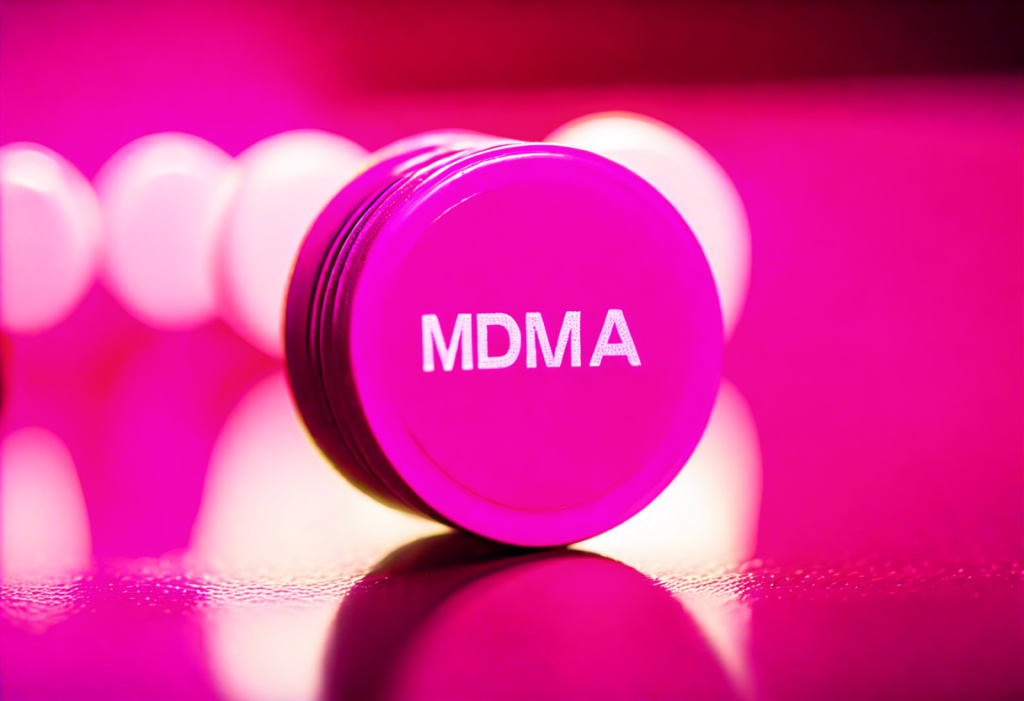The Truth About Molly: Risks Compared
Molly, also known as MDMA, is a synthetic drug that alters a person’s mood and perception. It is commonly found in the form of colorful tablets or capsules and is often deemed as a club drug due to its popularity in party scenes and music festivals. While its effects may seem appealing to some, it is crucial to understand the risks involved with the use of Molly.
One of the main dangers of Molly is its unpredictable composition. Unlike prescription medications, which undergo strict quality control measures, Molly is produced in illegal laboratories and often contains contaminants. Users can never truly know what they are consuming, and this lack of knowledge increases the chances of adverse effects. From toxic substances to other harmful drugs, the risk of accidental poisoning or overdose is a significant concern.
Furthermore, Molly’s impact on the body can be both immediate and long-term. In the short term, users may experience increased energy, enhanced sensory perception, and intensified emotions. However, the side effects can be severe and even life-threatening. These may include dehydration, overheating, heart palpitations, and high blood pressure. In some cases, individuals may experience seizures, loss of consciousness, or severe anxiety and panic attacks.
Molly’s long-term risks are equally alarming. Prolonged use of the drug can lead to significant damage to the brain and its neurotransmitter systems. Studies have shown that chronic use of Molly can result in memory problems, cognitive impairments, and overall brain dysfunction. Additionally, it can have a negative impact on a person’s emotional well-being, leading to symptoms of depression, anxiety, and social withdrawal.
It is important to note the potential dangers when comparing Molly to other substances, such as ecstasy. While both drugs contain MDMA, Molly is often considered to be purer and more potent than ecstasy. However, the risks associated with Molly remain the same, if not higher, due to its uncertain composition. Users may mistakenly believe that Molly is a safer alternative, but in reality, it poses similar health hazards.
Prevention and harm reduction strategies play a crucial role in addressing the risks of Molly. Education and awareness campaigns can help individuals make informed decisions and understand the potential consequences of using the drug. Promoting safer alternatives and providing access to support services for those struggling with substance abuse can also make a significant difference in minimizing harm.
While Molly may offer temporary feelings of euphoria and heightened sensations, its risks should not be underestimated. Its uncertain composition, short-term dangers, and long-term consequences highlight the need for caution and awareness. By understanding the truth about Molly and its risks compared to other substances, individuals can make informed choices and prioritize their health and well-being.
The Risks of Molly: Comparing with Ecstasy
The recreational use of drugs is a complex and risky phenomenon that has been prevalent in society for decades. One such drug that has gained popularity among partygoers and young adults is Molly, also known as MDMA. However, it is crucial to understand the risks associated with using Molly and how they compare to another commonly used drug called Ecstasy.
Molly and Ecstasy are often used interchangeably, but there are slight differences between the two. Molly is typically marketed as a pure form of MDMA, whereas Ecstasy is a street drug that may contain various substances, including MDMA. Both drugs produce similar effects, such as increased energy, euphoria, enhanced sensory perception, and emotional warmth. However, there are important distinctions to consider when evaluating their risks.
Molly and Ecstasy share common short-term risks. They can lead to dehydration, increased body temperature, and elevated heart rate, which may result in heatstroke or cardiovascular problems. Additionally, both drugs can cause anxiety, depression, and sleep disturbances, leading to mental health issues in the long run. However, Molly is regarded as a potentially purer form of MDMA, reducing the risk of contaminants that may be present in Ecstasy, such as harmful substances like caffeine or methamphetamine.
One critical distinction between Molly and Ecstasy lies in their potential for overdose. Due to variations in purity and dosage, Ecstasy carries a higher risk of overdose compared to Molly. The inconsistent composition of Ecstasy pills makes it challenging to gauge the exact amount of MDMA contained in each dose, increasing the likelihood of consuming dangerous levels of the drug.
The long-term risks associated with Molly and Ecstasy abuse are also significant. Studies have shown that prolonged MDMA use, regardless of the form, can lead to neurotoxicity, affecting serotonin levels in the brain and potentially causing cognitive impairments and memory problems. However, due to the potential for excessive adulterants in Ecstasy, the risk for long-term damage may be slightly higher compared to Molly.
Prevention and harm reduction strategies play a crucial role in addressing the risks associated with both Molly and Ecstasy. It is important to educate individuals about the dangers of these drugs, promote alternative recreational activities, and emphasize the importance of testing substances for purity. Additionally, fostering support networks and providing accessible resources for individuals struggling with substance use can contribute to reducing overall harm.
While Molly and Ecstasy share similar risks, there are notable differences that distinguish the two. Molly generally carries a lower risk of contaminants and overdose compared to Ecstasy. However, both drugs pose significant short-term and long-term risks to physical and mental health. It is imperative to make informed decisions, prioritize harm reduction, and seek support when engaging with these substances.
Molly: Short-Term Effects and Dangers
Molly, also known as MDMA or “ecstasy,” is a synthetic psychoactive substance that alters the brain’s chemistry and causes a range of physical and psychological effects. While some individuals may perceive Molly as a harmless party drug, it carries significant risks that can have devastating consequences in the short term.
One of the primary dangers of Molly is its impact on body temperature regulation. The drug disrupts the body’s ability to regulate heat, leading to an increase in body temperature, also known as hyperthermia. As a result, individuals who consume Molly may experience profuse sweating, an elevated heart rate, and even life-threatening heat stroke.
Molly’s effects on mood and cognitive function are also a cause for concern. The drug increases the release of serotonin, a neurotransmitter responsible for regulating mood and emotions. This flood of serotonin can induce intense feelings of euphoria, empathy, and increased sociability. However, prolonged MDMA use can result in the depletion of serotonin, leading to feelings of depression, anxiety, and irritability.
Moreover, Molly’s stimulating effects can have adverse consequences on the cardiovascular system. The drug prompts the release of both norepinephrine and dopamine, neurotransmitters associated with increased heart rate and blood pressure. This raises the risk of heart palpitations, arrhythmias, and even cardiovascular collapse.
In addition to these physiological dangers, Molly also poses immediate risks related to impaired judgment and decision-making. The drug can distort perception and cognition, leading individuals to engage in risky behaviors they might not consider under normal circumstances. This can include unsafe sexual practices, driving under the influence, or participating in dangerous physical activities, all of which can result in serious injury or death.
Furthermore, the quality and composition of Molly can vary significantly, as it is frequently produced clandestinely in makeshift labs. This lack of quality control increases the risk of consuming adulterated or contaminated substances. Individuals may unknowingly consume a combination of dangerous substances, such as methamphetamine, cocaine, or even dangerous cutting agents that can have severe health consequences.
The short-term effects of Molly are not to be underestimated. The drug’s impact on body temperature regulation, mood, cognition, cardiovascular function, and judgment make it a potentially dangerous substance. Understanding the risks associated with Molly is critical for promoting informed decision-making and harm reduction strategies among individuals who may be considering its use.
The Long-Term Risks of Molly Abuse: Potential Consequences
Molly, also known as MDMA or ecstasy, is a synthetic drug that alters mood and perception. While it may initially produce feelings of euphoria and empathy, the long-term risks of Molly abuse can have severe consequences for both physical and mental health.
One of the most concerning long-term effects of Molly abuse is the potential damage it can cause to the brain. MDMA targets the brain’s neurotransmitters, such as serotonin, dopamine, and norepinephrine, which are responsible for regulating mood, energy, and cognition. Prolonged use of Molly can disrupt these neurotransmitter systems, leading to long-lasting deficits in memory, attention, and other cognitive functions.
Additionally, prolonged Molly abuse can cause significant damage to the heart and cardiovascular system. MDMA stimulates the release of stress hormones and increases heart rate and blood pressure. This can put excessive strain on the heart and lead to heart palpitations, irregular heart rhythms, and even heart attacks. Long-term use of Molly has been associated with an increased risk of cardiovascular problems, including heart valve disease and hypertension.
Another risk of long-term Molly abuse is the potential for psychological dependence and addiction. Molly’s ability to produce intense feelings of pleasure and well-being can lead to repeated use, as users seek to recreate these effects. Over time, individuals may develop a tolerance to Molly, requiring higher doses to achieve the desired effects. This escalation can increase the risk of addiction, as users become dependent on the drug to function normally and avoid withdrawal symptoms.
In addition to the physical and psychological risks, long-term Molly abuse can also have detrimental effects on overall mental health. Chronic MDMA use has been associated with increased rates of depression, anxiety, and mood disorders. The drug’s impact on serotonin levels, a neurotransmitter responsible for regulating mood, can lead to imbalances that may contribute to the development of these mental health conditions.
Furthermore, there is a potential risk of neurotoxicity associated with Molly abuse. Studies have shown that MDMA can cause damage to the neurons that produce serotonin in the brain, leading to long-term changes in brain structure and function. This can result in persistent cognitive impairments and increased susceptibility to psychiatric disorders.
The long-term risks of Molly abuse are significant and should not be underestimated. From potential brain damage to cardiovascular problems, psychological dependence, and mental health issues, the consequences of prolonged MDMA use can be severe. It is crucial to educate individuals about these risks and promote prevention strategies to reduce harm and protect the well-being of those vulnerable to Molly abuse.
The Truth About Molly: Risks Compared
Molly, also known as MDMA, is a synthetic drug that alters mood and perception. It is commonly associated with the party and rave scene, where users seek its euphoric and empathogenic effects. However, it is essential to recognize the potential risks associated with Molly use compared to other substances.
When comparing Molly to other drugs, such as ecstasy, it is important to note that Molly is thought to be more pure and free of contaminants. This perception may make users believe that it is a safer alternative. However, Molly carries its own set of risks that individuals need to be aware of.
One of the immediate dangers of Molly use is its potential to cause dehydration and overheating. People who take Molly often experience increased body temperature, which can lead to dangerous levels of dehydration. It is crucial for users to stay hydrated by drinking water or electrolyte-containing beverages to prevent heatstroke or other complications.
Another risk associated with Molly involves its impact on serotonin levels in the brain. Serotonin is a neurotransmitter responsible for regulating mood, appetite, sleep, and other essential functions. Molly increases serotonin levels, leading to an intense euphoric feeling. However, this surge in serotonin can deplete the brain’s natural supply, causing a "hangover" effect. Users may experience fatigue, depression, and decreased motivation in the days following Molly use.
Moreover, the consumption of Molly can lead to severe cardiovascular complications. The drug can significantly increase heart rate and blood pressure, potentially leading to heart attacks or strokes, especially in individuals with pre-existing cardiovascular conditions. If you have a history of heart problems or hypertension, it is crucial to avoid using Molly due to the heightened risk it poses.
Additionally, Molly use can result in adverse psychological effects. Some users may experience anxiety, panic attacks, or even psychosis, involving hallucinations and delusions. These effects can be particularly dangerous for individuals with underlying mental health conditions, such as depression or anxiety disorders.
One must also consider the potential for addiction with Molly use. While it may not be as physically addictive as other substances, such as opioids or stimulants, Molly can still lead to psychological dependency. Users may find themselves relying on the drug to enhance their mood or cope with emotional issues, leading to an unhealthy pattern of use.
While Molly may be perceived as a "safer" alternative to other drugs, it is crucial to recognize the risks it carries. Dehydration, serotonin depletion, cardiovascular complications, psychological effects, and the potential for addiction are all hazards associated with Molly use. To protect your well-being, it is best to make informed decisions regarding drug use and prioritize your mental and physical health over temporary effects.
Conclusion
Molly, a potent stimulant and hallucinogenic drug, poses a range of risks to individuals who use it. The effects of Molly on the body can be intense and unpredictable, elevating heart rate, blood pressure, and body temperature. While Molly and ecstasy share similarities, such as the active ingredient MDMA, Molly is typically considered to be purer and more dangerous. This comparative analysis of risks highlights the importance of understanding the potential dangers associated with the use of Molly.
In the short-term, the use of Molly can lead to a host of dangerous effects and side effects. Users may experience increased energy, euphoria, and heightened senses, but these pleasurable sensations can quickly turn harmful. Dehydration, overheating, and increased risk-taking behavior can put individuals at risk of adverse outcomes, including seizures, heart attack, and even death. The purity and dosage of Molly can vary significantly, increasing the unpredictability of its effects and heightening the danger.
Looking beyond the short-term, long-term abuse of Molly can have serious and potentially irreversible consequences. Prolonged use of the drug has been linked to cognitive impairments, memory deficits, and mood disorders. Chronic use can also lead to damage to the brain’s serotonin system, resulting in lasting changes to emotional regulation and increased vulnerability to depression and anxiety disorders. These long-term risks should not be taken lightly, and individuals should be fully aware of the potential consequences of Molly abuse.
To combat the dangers associated with Molly use, prevention and harm reduction strategies are essential. Education plays a crucial role in raising awareness about the risks and dangers of the drug. By providing accurate information about the effects of Molly on the body, users can make informed decisions and better understand the potential harm they may be exposing themselves to. Peer-led initiatives, community outreach, and targeted campaigns can help reach vulnerable populations and provide the support and resources needed for prevention and harm reduction.
Additionally, it is crucial to promote harm reduction practices among those who choose to use Molly. Encouraging responsible use includes advocating for measures such as accurate labeling, dosage education, and access to harm reduction tools like drug testing kits. Implementing policies that prioritize the health and safety of users, such as medical amnesty laws and drug checking services, can help reduce the risks associated with Molly use and minimize the potential for harm.
The truth about Molly is that its use carries inherent risks. From the effects it produces on the body to the comparative analysis with ecstasy, it is evident that the dangers associated with Molly are both short-term and long-term. To combat these risks, prevention efforts and harm reduction strategies are vital. By raising awareness, promoting education, and implementing policies that prioritize the health and safety of users, we can strive to reduce the harm associated with Molly use and protect individuals from its potential consequences.




